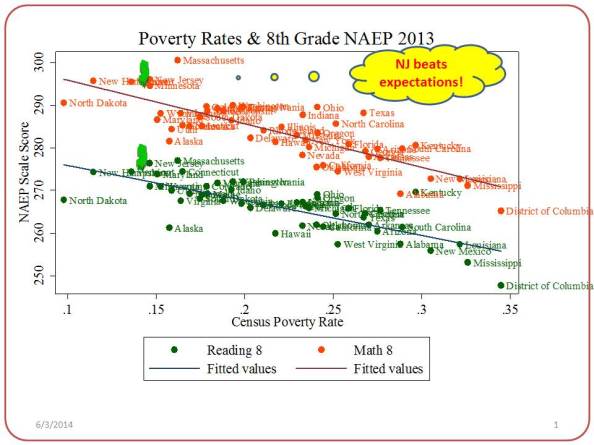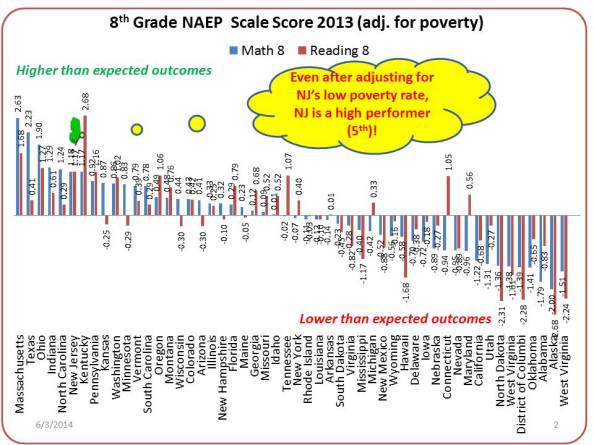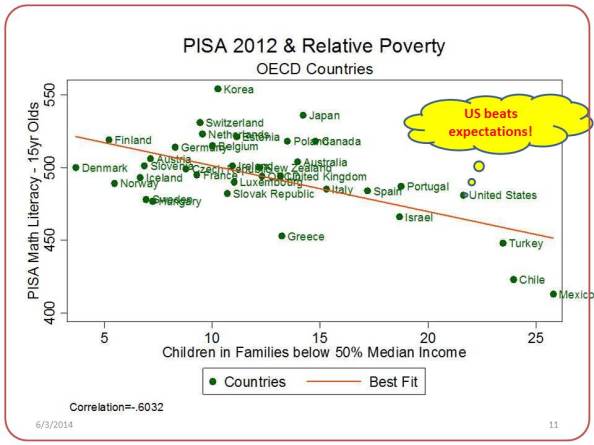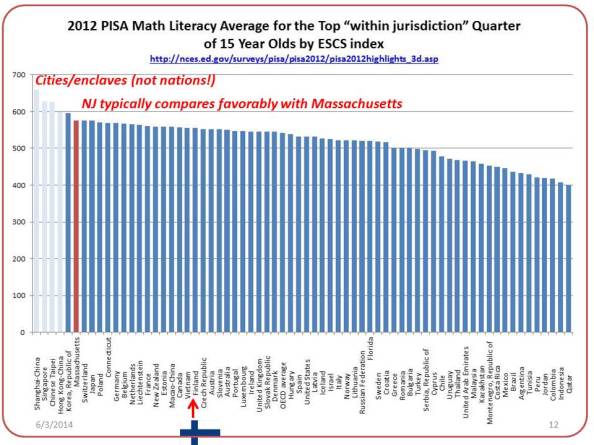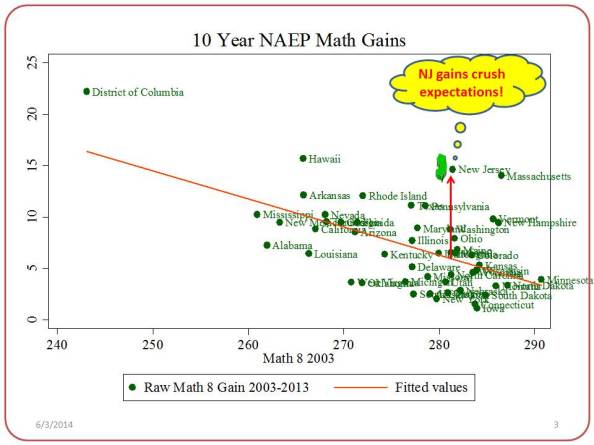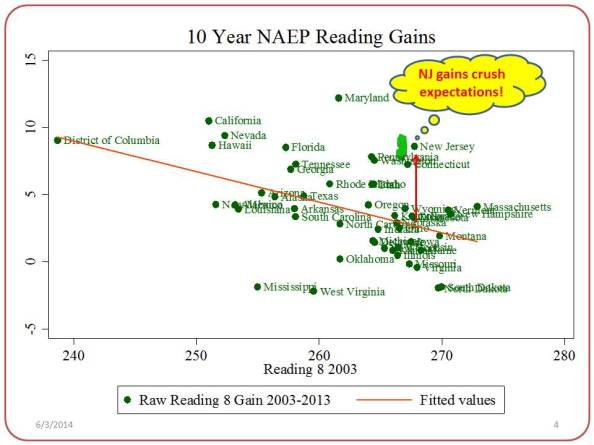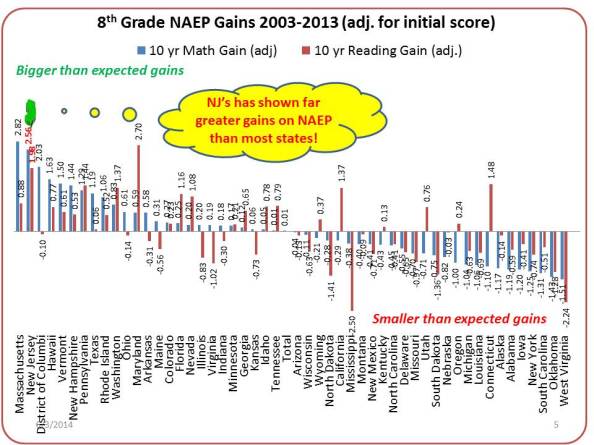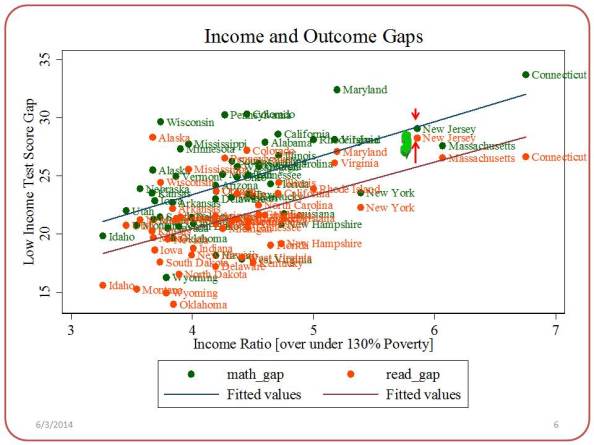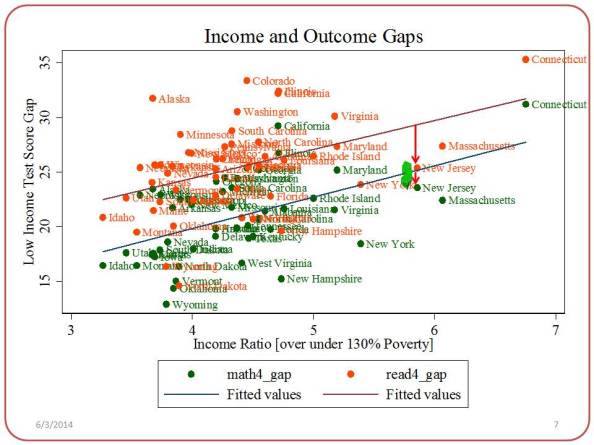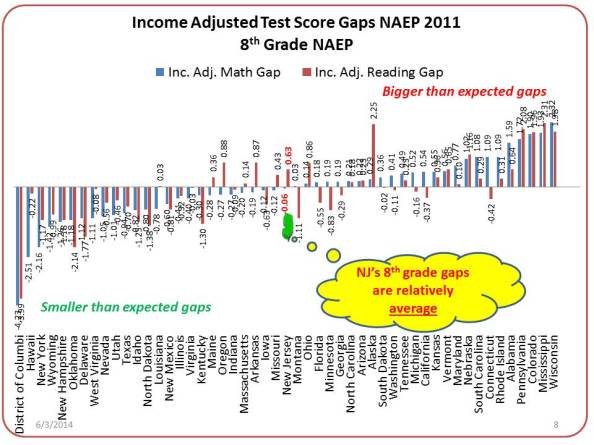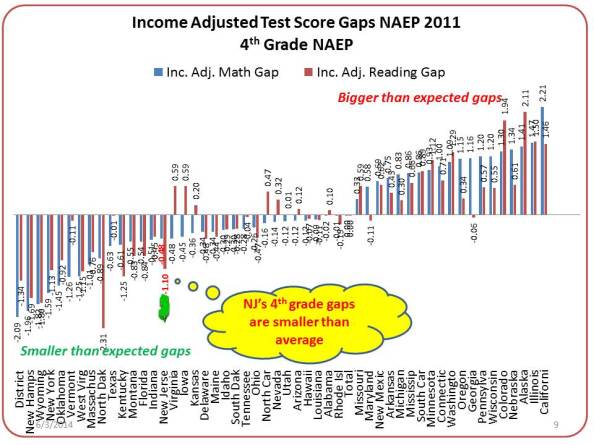School Finance 101: Stronger than the Scorn: How Do NJ Schools Really Stack Up?
This is my end of school year review for New Jersey schools. Indeed much of the data in this post is from years prior. Nonetheless, these data affirm a long standing strong position of New Jersey schools either in the U.S. or international context. On many occasions I’ve pointed out better and worse uses of national and international assessment data – of Mis-NAEPery and PISA-Palooza… wherein the media and punditocracy go wild with gross misrepresentations and misinterpretations of relatively limited albeit not entirely useless assessment data.
In New Jersey, we’ve been told in recent years that while our average scores remain high, we must not rest on our laurels, because our gains pale by comparison to reformy standout states like Tennessee. We’ve been told that while our average performance is high, our gaps in achievement are among the largest in the nation and certainly not improving at any reasonable rate. We’ve also been told that these findings provide strong proof that all the money New Jersey has thrown at schools in response to years of litigation over school funding has not only been unhelpful, but that the additional funding to high poverty settings has actually caused harm. As such, the way to repair that harm is to reduce funding to high need settings and redistribute those harmful resources across other, less needy districts likely to use it more wisely (yeah… really… they did say that… and they’ve followed through on that redistribution plan!) And that will help fix the achievement gap!
But what really is the state of student outcomes in New Jersey, if we apply a few basic principles to the analysis of NAEP data – guidelines I have addressed in numerous previous posts:
- First, average state contexts differ and those differences strongly influence average NAEP scores at all grade levels. In short, poverty matters! As such, performance levels should be adjusted for poverty.
- Second, NAEP gains over time (which are cohort gains), are strongly influenced by initial NAEP performance. That is, those who started lower and had more to gain, gained more. As such, changes over time should be adjusted for initial scale scores.
- Third, achievement gaps between low income and non-low -income, or among races are substantially influenced by the income gaps between these groups. As such, achievement gaps should be adjusted for differences in income between groups.
Average Performance Level Adjusted for Poverty
This first figure shows us the scatterplot of state average poverty rate and average 8th grade NAEP scale scores. Those states falling above the line have greater than expected scale scores and below the line have lower than expected scale scores. Notably, the correlations are quite strong. New Jersey beats the odds on both 8th grade reading and math. That is, NJ scores are higher than would be expected even given New Jersey’s low poverty rate?
Figure 1
If we rank states by their average difference from expectations, New Jersey comes in fifth (averaging the math and reading differentials).
Figure 2
But that’s only because the whole U.S. stinks, right?
Of course, some might argue that its really nothing to cheer about – doing better than other U.S. states, because of course, we all know that the U.S. performs miserably compared to other nations. But as I’ve pointed out previously, when conducting similar poverty adjusted comparisons across countries, the U.S. doesn’t look so bad. (see here for more explanation/discussion)
Figure 3
Ah… but you say (Amanda Ripley style)… outcomes of even high performing – non-low income kids in the U.S. still stink compared to those in other countries. Again, I respond by pointing out that most such comparisons are deeply conceptually flawed. Perhaps most importantly, as I’ve explained on numerous previous posts, the U.S. average is only as low as it is in international comparisons because of the large number of low performing (relatively high poverty) states that have largely thrown their education systems under the bus for the past several decades. Massachusetts and New Jersey (among others) are not contributing to that drag, and if treated as their own nations (like the silliness of comparing against Shanghai or Singapore), they’d look pretty good.
Figure 4
Aren’t other states kicking NJ’s butt on NAEP gains because of their reformy policies?
Okay – so New Jersey’s average performance is pretty high even adjusted for its low poverty rate. But we all know – including the U.S. Secretary of Education, that states that have been much more aggressive with teacher effectiveness policies and charter expansion have kicked NJ’s butt over the past several years on gains. NJ is simply resting on its laurels. Complacent and, as such, a serious laggard. Heck, any day now, Tennessee, Louisiana, Colorado and even Washington DC will be blowing away New Jersey on NAEP. Any day now. Any day!
As I’ve pointed out previously, NAEP gains are sensitive to NAEP starting point. Yeah… if you start low, it seems that for whatever reason (test scaling, etc.) it’s easier to show bigger gains.
So then, where does NJ stand on 10 year NAEP gains (because looking at 2 year gains is simply pointless) when compared to other states, after adjusting for starting point? First, here’s the relationship between starting point and gains (clearer picture in this post, dropping DC):
Figure 5
Figure 6
Now, here are the adjusted ranks.
Figure 7
But what about those massive achievement gaps?
One of the common reformy assertions in New Jersey in recent years has been that even if we wish to deceive ourselves that on average, New Jersey is doing pretty well, there’s simply no refuting that our achievement gaps are among the worst in the nation. Further, these gaps are proof positive of the harms of targeting additional resources at children in need.
Let’s take a look at those achievement gaps, with an appropriate adjustment for income gaps. As I’ve explained over and over and over again – achievement gaps between low income and non-low income kids, or between kids of different races, are significantly explained by differences in family income of these groups. Yeah… put simply, income gaps predict outcome gaps. As such, one can use the income gaps to adjust the outcome gaps, just like these previous analyses.
First, here are the scatterplots revealing the relationships between income gaps and outcome gaps.
Figure 8
Figure 9
Now, here are the adjusted achievement gaps. New Jersey’s achievement gap is only above average for one measure – NAEP reading grade 8. At the fourth grade level, New Jersey’s achievement gaps are among the smallest in the country!
Figure 10
Figure 11
Summary?
To summarize:
- NJ schools do better than expected on NAEP given statewide poverty rates, ranking among the highest states.
- NJ schools have gained more on NAEP than nearly all other states (when correcting for starting point)
- NJ’s 8th grade achievement gaps are relatively average (when correcting for income gaps). The only NJ achievement gap that is greater than average is grade 8 reading.
- NJ’s 4th grade achievement gaps are among the smallest among states (when correcting for income gaps)
So congratulations, NJ… you’re doin’ pretty well. That’s not to say by any stretch of the imagination that we should be complacent. We’ve still got Massachusetts to catch up to in most cases. They, not Tennessee or Louisiana are giving us a run for our money. And as I pointed out in my most recent post, we need to give serious consideration to reinvesting in our neediest communities. Prior investments (including early childhood programs) may provide partial explanation for why our fourth grade achievement gaps are so relatively small. But we’ve backed off substantially on funding fairness in recent years, the consequences of which are yet to be measured.
This blog post has been shared by permission from the author.
Readers wishing to comment on the content are encouraged to do so via the link to the original post.
Find the original post here:
The views expressed by the blogger are not necessarily those of NEPC.
